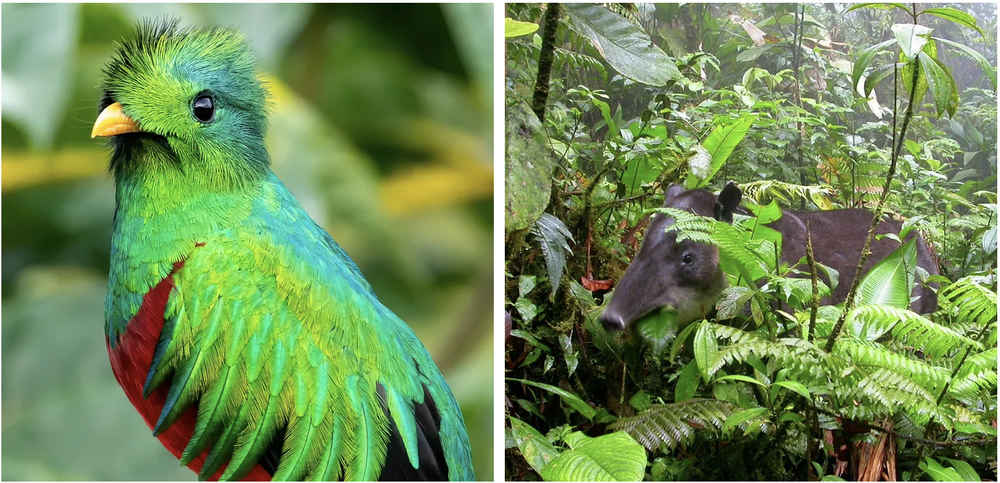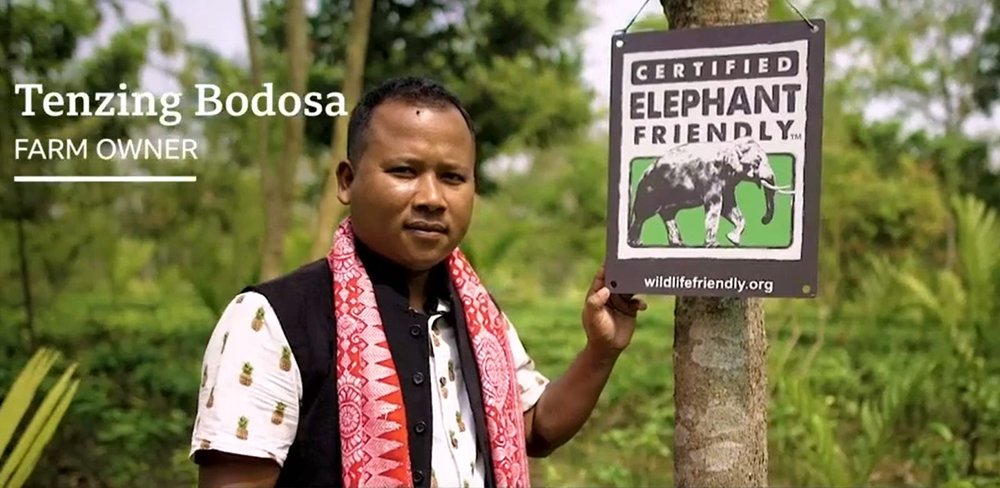12 inspiring rewilding success stories from around the world
My dear subscribers,
There are now more than 6,500 of you across 49 states and dozens of other countries, far exceeding the ambitious goal I set when I launched Dear Avant Gardener a year ago. I am beyond thrilled that so many are enjoying its mix of landscaping advice and ecological research.
And, sending me over the moon, many of you are acting on my advice to make your own yards more biodiverse and environmentally friendly. With 78 percent of American land in private hands, real change must come from a broad group — including each of us. Thank you for joining me on this journey!
To celebrate and encourage your passionate engagement, dear readers, here are 12 ecological restoration success stories.
— The Avant Gardener
1. Reforestation supports critically endangered birds. (Hawaii)
A 96-acre reforestation project on the island of Hawai’i has become home to critically endangered palilas, of which only 2,000 survive. More than 90 percent of Hawai’i was deforested over the past 100 years. Saving Hawai‘i’s Forests, launched by owners of a ukulele company and largely powered by local volunteers, aims to plant 2 billion trees to protect the island’s unique plant and wildlife.
The Hawaiian Islands, one the world’s most far-flung island archipelagos, have become known as the extinction capital of the world. Ninety-five of their original 142 bird species have gone extinct since humans first arrived. — Monga Bay
2. Megafauna return to inland “island habitat.” (Costa Rica)
Ecologically, “island habitats” can also be landlocked, like Costa Rica’s cloud forest. The unique species in such ecosystems are especially vulnerable to habitat loss. Started by a couple who bought degraded farmland bordering cloud forest, Cloudbridge Nature Preserve has restored 700 acres by creating their own nursery from old growth seeds on the property.
These are seeds only a large animal such as Baird’s tapir (Tapirus bairdii), the largest wild land mammal currently living in Central and South America, can disperse. But when Cloudbridge was founded, no Baird’s tapirs were living among the degraded pastures. In the far distant past, other megafauna, now extinct, likely would’ve played the tapir’s seed-spreading role, including the elephant-like gomphotheres. However, species-area relationships apply here too: Stressed small island habitats are most likely to see their large species go extinct first. — Monga Bay
Now tapirs are back, along with all five indigenous wild cats and 305 bird species — a 60-fold increase that includes the beautiful and near-threatened quetzal.

The near-threatened quetzal, left, and Baird's tapir
3. Yes, small urban plantings support native insects. (Australia)
But it’s not just wild areas that are benefiting from restoration. A study in Melbourne published this month confirms a fundamental principle of this newsletter: Replacing non-native turf in our yards with native plants can reverse the decline in native insects and the birds that depend on them. Replacing non-native lawn and two non-native trees with 12 native plant species yielded steady increases in biodiversity over four years, reaching 7.3 times more insect species on the native plants than on the baseline non-native plants.
Our findings therefore demonstrate that large ecological changes may be derived from investing in small urban greening actions, even in highly urbanised landscapes such as this study, and that these may bring indigenous insect species back to urban areas where they have become rare or been extirpated. — Ecological Solutions and Evidence
4. Cities emerge as biodiversity hotspots. (Worldwide)
In its review of two recent books, the Washington Post summarizes, “The keystone of biodiversity in the 21st century resides not in farmland or nature preserves, they argue, but in cities.”
In “Urban Jungle: The History and Future of Nature in the City,” Ben Wilson points out that Chicago’s raccoons have more offspring and are healthier than their country cousins. Foxes, raccoons and coyotes live in greater densities in American cities than they do in rural areas. [“Secret Life of the City” author] Bjorgaas reports that seagulls in the northern Norwegian islands are near extinction, but great clouds of the endangered gulls mass in Oslo. The same is true, Wilson points out, for the gray-headed flying fox in Australian cities or the golden lion tamarin in Brazil. The peregrine falcon lives in Manhattan at the greatest densities of any place in the world. When food runs low in the forests, black bears move into Aspen, Colo. — Washington Post
5. Architect demonstrates green potential of urban towers. (Italy)
The Bosco Verticale — Vertical Forest in English — are two towers in Milan that house 800 trees, 5,000 shrubs, and 15,000 perennials on balconies designed to permit growth and centralized maintenance. That’s equivalent to more than seven acres of woodland on a three-quarter acre footprint. Architect Stefano Boeri’s goal is to satisfy people’s “quest for greenery” while limiting urban sprawl.
Unlike “mineral” facades in glass or stone, the plant-based shield does not reflect or magnify the sun’s rays but filters them thereby creating a welcoming internal microclimate without harmful effects on the environment. At the same time, the green curtain “regulates” humidity, produces oxygen and absorbs CO2 and microparticles. . . . Irrigation is also centralized: the needs of the plants are monitored by a digitally and remotely controlled installation while the necessary water is largely drawn from filtered effluent from the towers. . . . A few years after its construction, the Vertical Forest has given birth to a habitat colonized by numerous animal species (including about 1,600 specimens of birds and butterflies), establishing an outpost of spontaneous flora and fauna recolonization in the city. – Stefano Boeri Architetti

Source: Stefano Boeri Architetti
6. Another state law protects right to a natural landscape. (Minnesota)
Suburbs have even more biodiversity potential than cities — if people could just get over their lawns. That’s why legal protection like Minnesota’s is so important. Effective this summer, Minnesotans are assured the right to install and maintain natural landscapes. The law follows a national trend, expanding on Florida’s law encouraging the use of native plants and grasses and Maryland’s law limiting homeowners’ associations from restricting such landscaping choices.
“Managed natural landscape” is defined as a planned, intentional, and maintained planting of native or nonnative grasses, wildflowers, forbs, ferns, shrubs, or trees, including but not limited to rain gardens, meadow vegetation, and ornamental plants. Managed natural landscapes does not include turf-grass lawns left unattended for the purpose of returning to a natural state. — League of Minnesota Cities

Garden by Northern Natural Gardens, St. Paul, Minnesota
7. Neighbors restore endangered park ecosystem. (Vancouver)
In 2007, Margaret Lidkea co-founded the Friends of Uplands Park Society, a volunteer-driven initiative aimed at protecting and educating people about the local Garry oak ecosystem — one of the most endangered in North America. Historically, First Nations maintained these oak-prairie landscapes with fire to promote growth of camas, a major source of starch in their diets. After Europeans banned controlled burning and introduced invasive plants, 95 percent of Garry oak meadows were lost. Lidkea and her volunteer colleagues saved the 74-acre park from a similar fate.
Volunteers removed invasive shrubs and grasses, replanted native species, put up signs for people to stay on trails, and educated the community about the uniqueness of this ecosystem they live among. The efforts paid off. . . . Instead of the [invasive] Scotch brooms, oak trees stood out in the landscape. Today, Uplands Park harbors 26 species of native plants, of which 16 are designated as species at risk by the Canadian government. — Monga Bay

Camas meadows in bloom in the Uplands Park, Victoria, British Columbia
(Image: Wylie Thomas, Friends of Uplands Park Society)
8. Toads find microforest against all odds. (Los Angeles)
Inspired by the work of Japanese botanist Akira Miyawaki, thousands of mini forests on urban sites around the world are proving the enormous biodiversity potential of spaces as small as basketball courts. The Miyawaki method includes site preparation, dense multi-level planting of natives, and three years of care before they become self-sustaining. In Los Angeles, a mini-forest that occupies 1,000 square feet has attracted all sorts of insects, lizards, and birds. What impressed me most — because I’m hoping to attract some frogs to a small pond I’m planning — was how western toads journeyed there from the Los Angeles River:
To get to the forest, the toads had to clamber up a concrete embankment, traverse a bike trail, venture down another dirt embankment and cross a horse trail. — The New York Times
9. New tea-growing practices save elephants and people, too. (India)
Asian elephants are an endangered species, with fewer than 50,000 remaining, about half in India, where tea production has taken over their historic range. They dislike tea plants and plantations have left them little food, leading to elephant-human conflict deadly to both species, with more than 60 human deaths in 2018, for example. Elephant and human deaths are both down, however, at Tenzing Bodosa’s tea garden. Bodosa does not use dangerous drainage ditches, electric fences, or chemical pesticides and fertilizers, and allows elephants to move freely through the plantation.
The most unusual part of Bodosa’s farm, though, is its buffer zone, where the tea fields end and the jungle begins. While most local growers cut down the plants elephants eat that grow around their farms, Bodosa adds to the vegetation, planting bamboo, star fruit and other plants elephants love. Bodosa’s innovation has not gone unnoticed — he has trained about 30,000 farmers on his tea-farming practices, and his garden has been certified by the Wildlife Friendly Enterprise Network as the world’s only elephant-friendly tea farm. — BBC

Source: BBC
10. Faith-based organizations create “sacred grounds” with natives. (Toledo)
I became verklempt watching the video about the National Wildlife Federation’s Sacred Grounds program! Various communities of faith in Toledo are installing labyrinths, prayer gardens, rain gardens, and so on using native plants. The National Wildlife Federation provides financial and technical assistance and the faith-based communities install the gardens and teach the surrounding community about the benefits.

11. HP campus saves wildlife while cutting costs. (Boise)
Companies across the country are transforming their campuses to be more sustainable — and cutting costs in the process. For example, Hewlett-Packard replaced more than 30 acres of resource-intensive turf with native plants.
The U.S. Green Building Council, which administers the LEED certification for sustainable buildings, has a comparable program, SITES, for landscapes that promote biodiversity, conserve resources and protect ecosystems. Hewlett-Packard received a SITES certification for its Boise, Idaho, campus after working with the landscape architecture firm Stack Rock Group to replace turf grass with a native seed mix that reduced water use and mowing — cutting landscaping costs nearly 50 percent and emissions 90 percent. — The New York Times
12. Research on biodiversity in home gardens is accelerating. (Worldwide)
A meta-analysis released this month really drove home the recency of ecological landscaping as a field. As you can see from the chart below, the entire field of academic study began roughly 20 years ago. Fortunately, the pace of research is accelerating. I look forward to continuing to share findings with you as they appear.

Source: Biodiversity and Conservation
Related Resources
Want to support Asian elephants? Order Elephant Friendly tea through Elephant Origins or Inspired Leaf.
Do you belong to a faith community? Learn more about NWF’s Sacred Grounds.
Work for a corporation with large campuses? Encourage them to save money and biodiversity with SITES certification.
